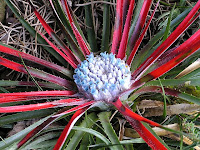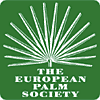 Fascicularia Bicolor is the third and last of the Bromeliads that I grow.
Fascicularia Bicolor is the third and last of the Bromeliads that I grow.
Another Chilean plant, it has, like Bilbergia Nutans and Puya Alpestris turned out to be one of the best plants that I've bought for my garden.
These three plants alone have amazed me with their ease of growth, freedom from pests and their hardiness
They are without doubt, some of the most rewarding plants I’ve ever grown and I’d recommend them to anyone.
F.Bicolor is a clump forming plant made up of several vaguely urn shaped rosettes.
On my plants, the leaves are narrow, about 12 inches long and they’re armed with spines along each leaf margin.
As the rosettes age, they become more open in their growth and the leaves begin to turn a silvery colour.
On reaching maturity, the rosettes are almost fully open and in late summer the leaves turn a bright red or scarlet colour.
At this point a flower head develops and if you look closely at the photo, you'll see that this is made up of many small buds.
It's the petals on these buds opening up that give the flower head its pale blue colour.
Unfortunately, once it’s flowered, the urn dies away to be replaced by new growth.
You do need a bit of patience with this plant because flowering doesn’t happen every
year, so you need to wait until more of the rosettes have matured before it happens again.
Mind you, it’s worth the wait because to see two or three of the rosettes in full colour is really spectacular.
(If you want to take a photo of your plant including the blue flowers, then you'll need to be quick.
The reason for this haste, is due to the fact that the petals are a magnet for every mini-slug and wood louse in the area and in a very short space of time you're flowers have been eaten.)
Cultivation is easy, full sun and a very well drained soil is all that’s required.
For more details, see my Blog at Puya Alpestris a gem plant.
That my gardening friends, is about it. Posted by Mike.




